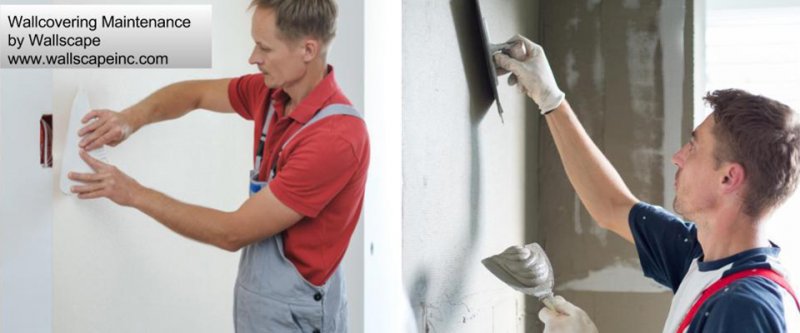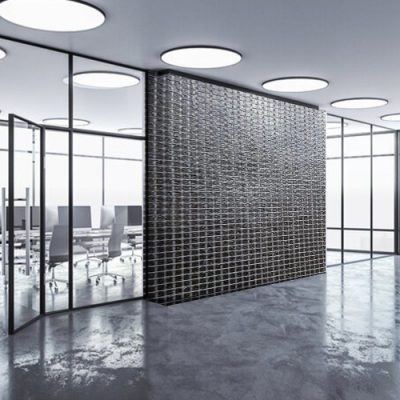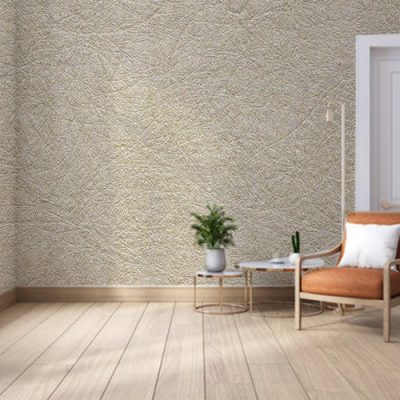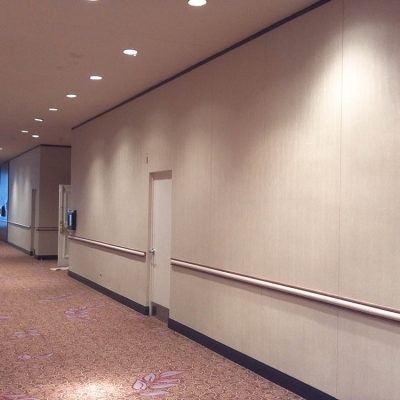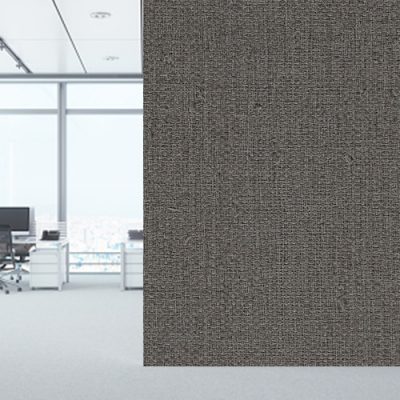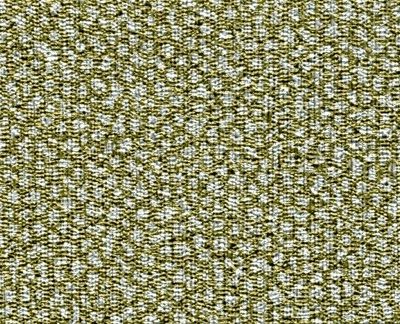Evaluate the egress of corridor traffic to identify a wall coverings maintenance plan.
Areas such as elevator lobbies, entrances, meeting rooms, hotel rooms, escalator walls, etc may receive a 75% higher impact than the connecting walls. Having the same pattern of wall coverings available in storage, is key for good building operations. Changing commercial wall coverings from breakpoint to breakpoint is a good practice. Changing a new sheet in the middle of the wall may show color variations depending on how long ago the existing sheet was installed.
Preparation of Wall coverings
Examine all wall coverings to assure that pattern, color, and quantity is correct. Organize wall coverings by shade lot number and in roll number sequence, starting with highest number down or lowest number up.
Preparation of Surface Prior to Installation of Commercial Vinyl Wall coverings
Surfaces to receive wall coverings, must be clean, smooth, dry and structurally sound. Loose paint or old wall coverings must be removed. To ensure maximum smoothness of a quality installation, nail heads, nicks, gouges, and other imperfections should be spackled, sanded smooth, and sealed with primer. On new walls, drywall joints should conform to ASTM 09900 spec, and sand smooth prior to any installation.
Installing commercial wall coverings over ballpoint pen writing, wax crayon, ink marker, oil-based stains or any foreign matter may bleed through the wallcovering surface. Use a lead pencil to mark any wallcovering as pencil marks will usually not bleed through.
Sand down Glossy surfaces to dull the surface and then apply a professional grade primer prior to install of commercial wall coverings.
Clear Heavy Duty commercial wallcovering adhesives work well. Yellow clay based glues are sometimes approved equals, However, contact to the wallcovering surface could damage it.
Application of Wall Coverings
Before installing any wall covering, examine the pattern for color uniformity, and repeat in design. Patterns should be booked, or reversed, depending on the texture, color, or preference. Only full widths of material should be used for a satisfactory installation.
Install new panels from “breakpoint to breakpoint”. If it is a high traffic location, inside corner cuts work well for a swift exchange.
For reversible patterns, every other strip of the wall covering should be reversed (hang top to bottom and on the next strip reverse bottom to top) to insure color uniformity. Headers may cause unsatisfactory shading if installed out of sequence.
Wall covering seam concealment
Double-cutting and pre-trimming both have advantages in making acceptable seams. Do not “score” the wall beneath when double cutting to create a seam.
Install the first several sheets of wallcovering and approve before continuing
Apply an even coat of adhesive to the fabric backed side of the wallcovering material using a ½ nap paint roller. The commercial wall covering should be applied to the wall as soon as the adhesive has become tacky. Smooth the surface, while working out the air bubbles as you go. As each strip is installed, immediately remove excess adhesive. Wipe down seams using a natural sponge and a soft bristle brush frequently rinsed in clean warm water. Dry with a clean cloth.
A temperature of more than 55°F in both areas of installation and storage of wallcovering is usually recommended.
Permanent building lighting should be in place.
Installing wallcovering in temporary lighting could alter the visual effect.
Installing commercial wall coverings over existing wall covering is not recommended
Existing wall covering should be removed before installing new.
Painting over any commercial wallcovering is not recommended.
How to install wallcovering? Here are some techniques from professionals
Feel free to comment, and share your ideas!
www.wallscapeinc.com

